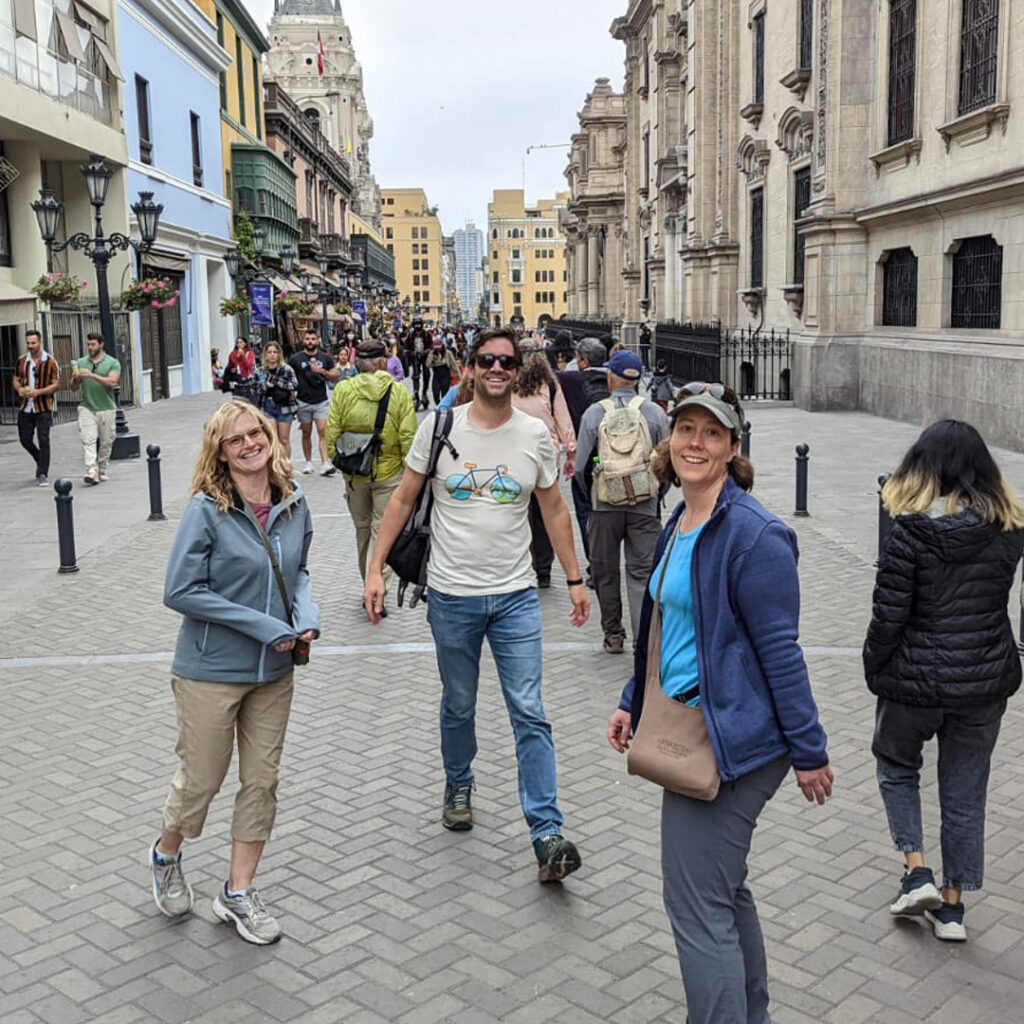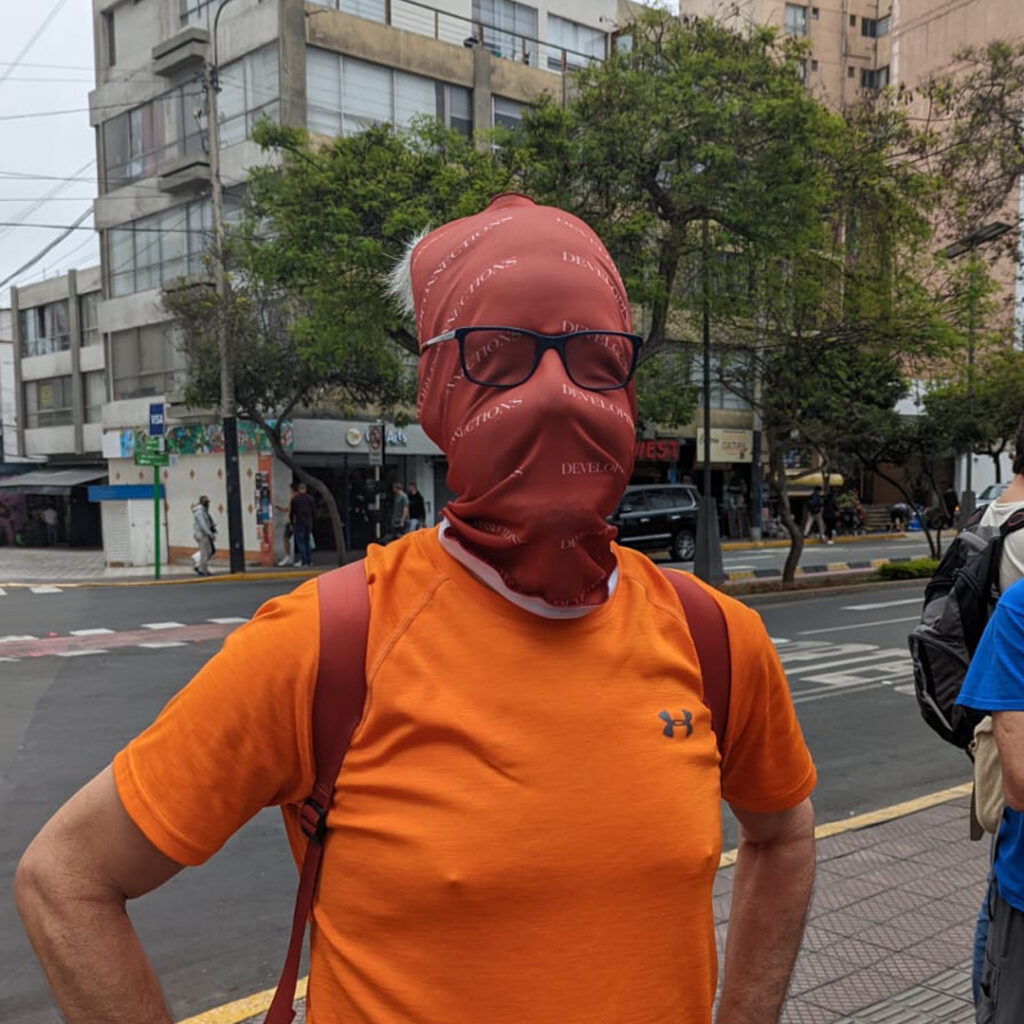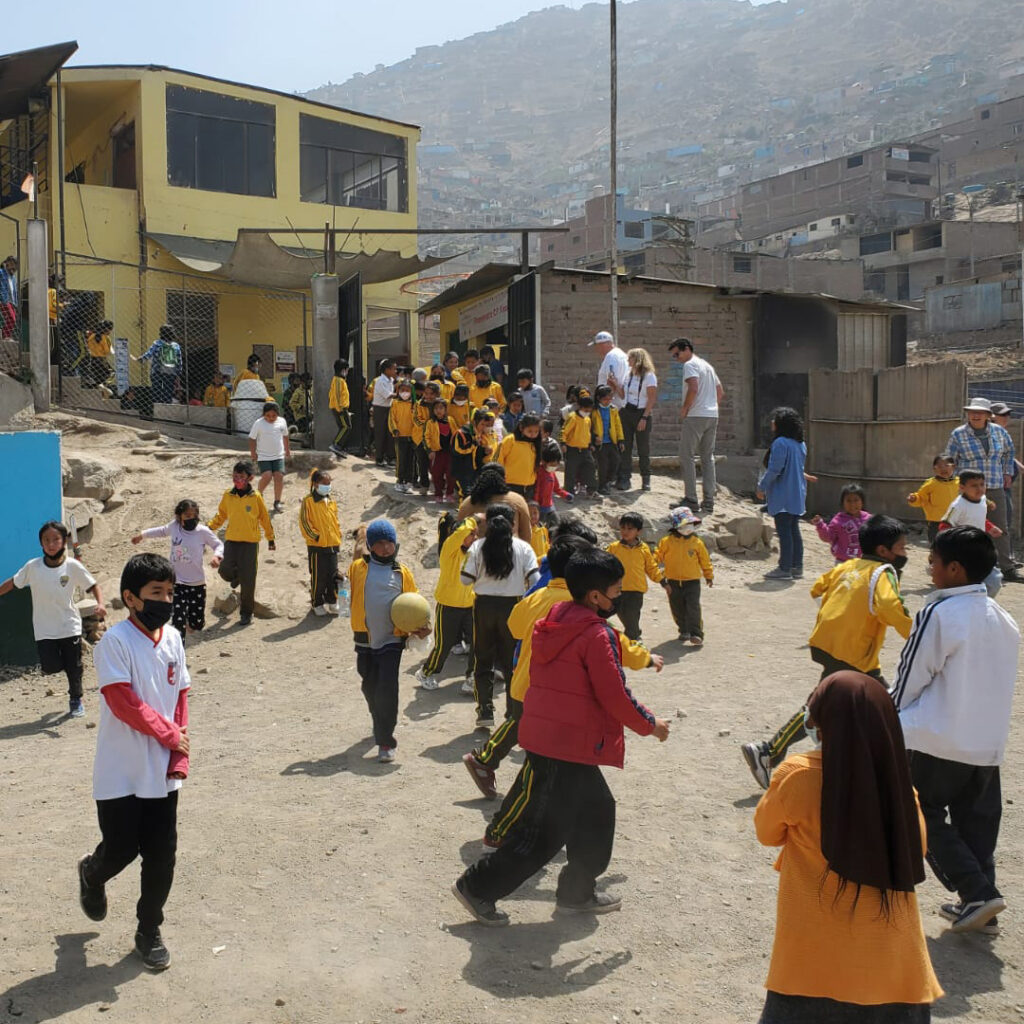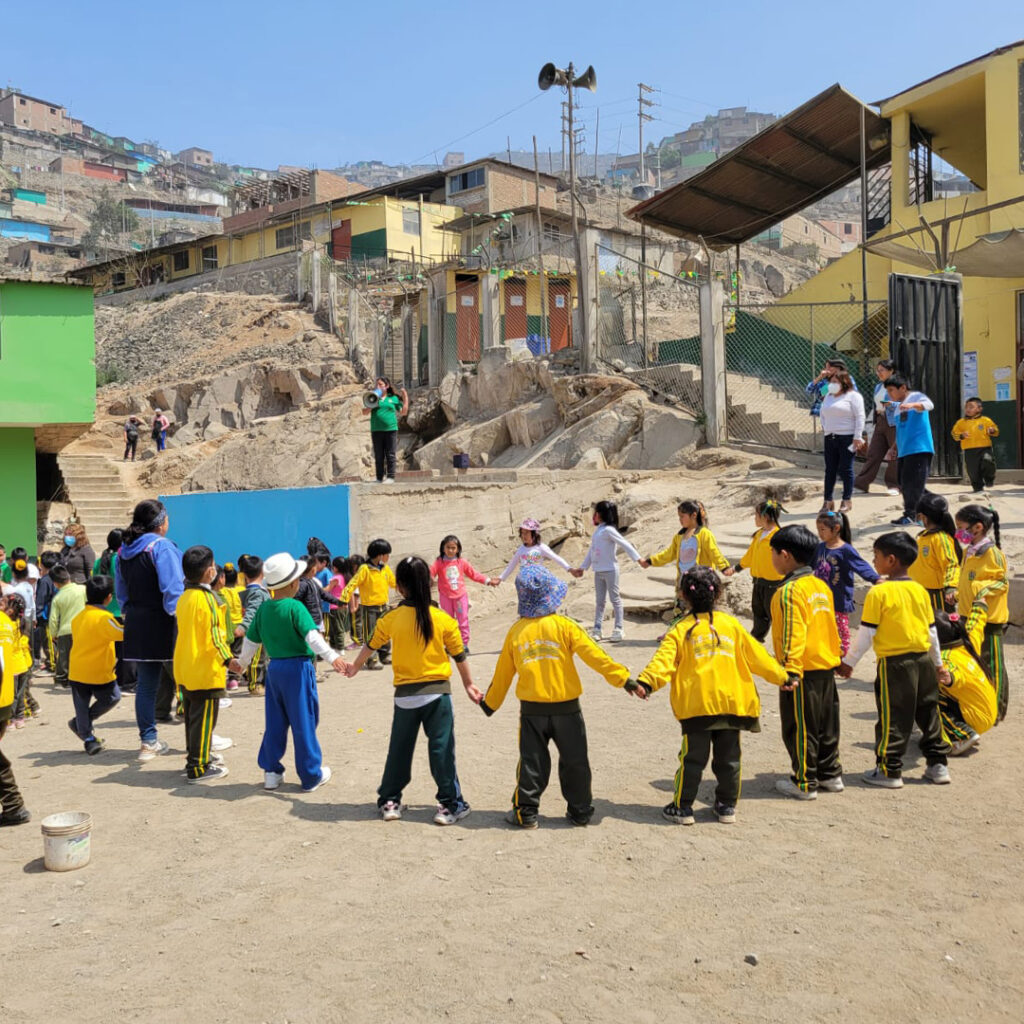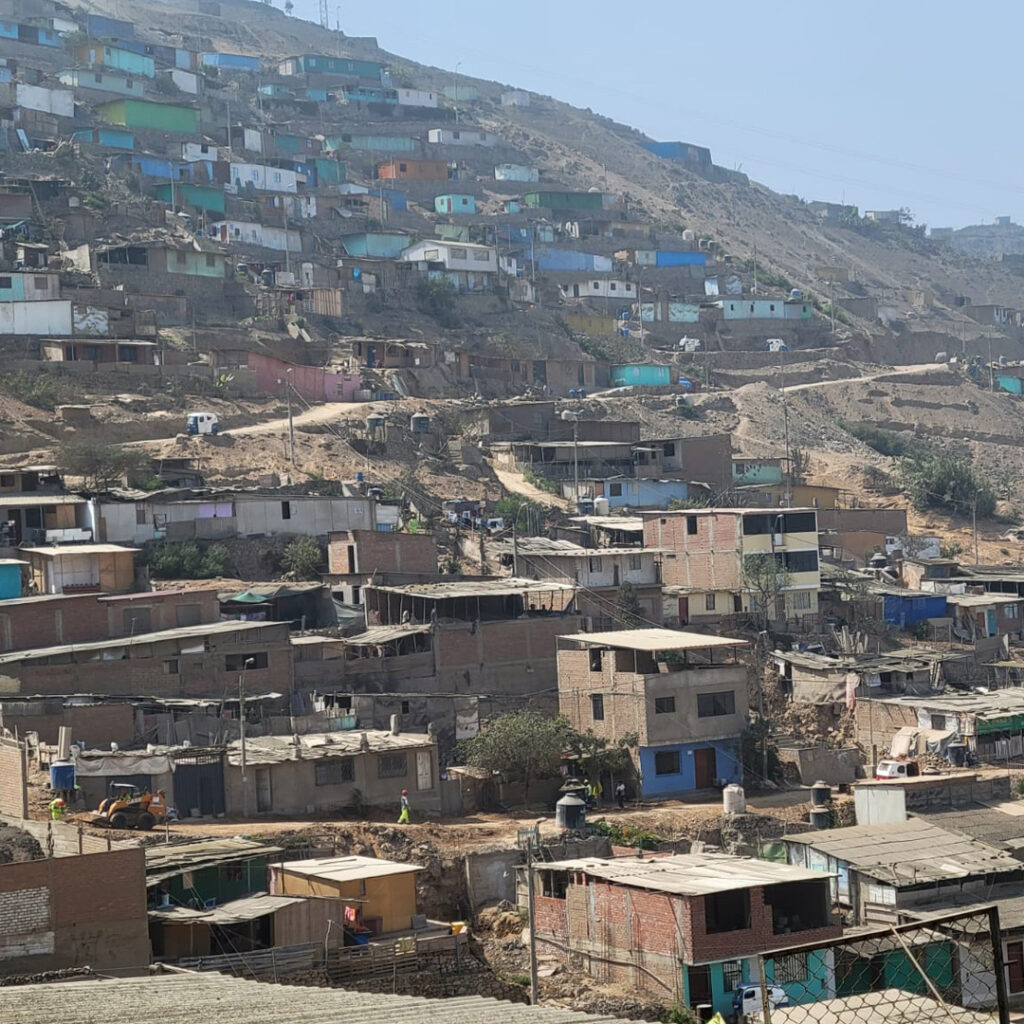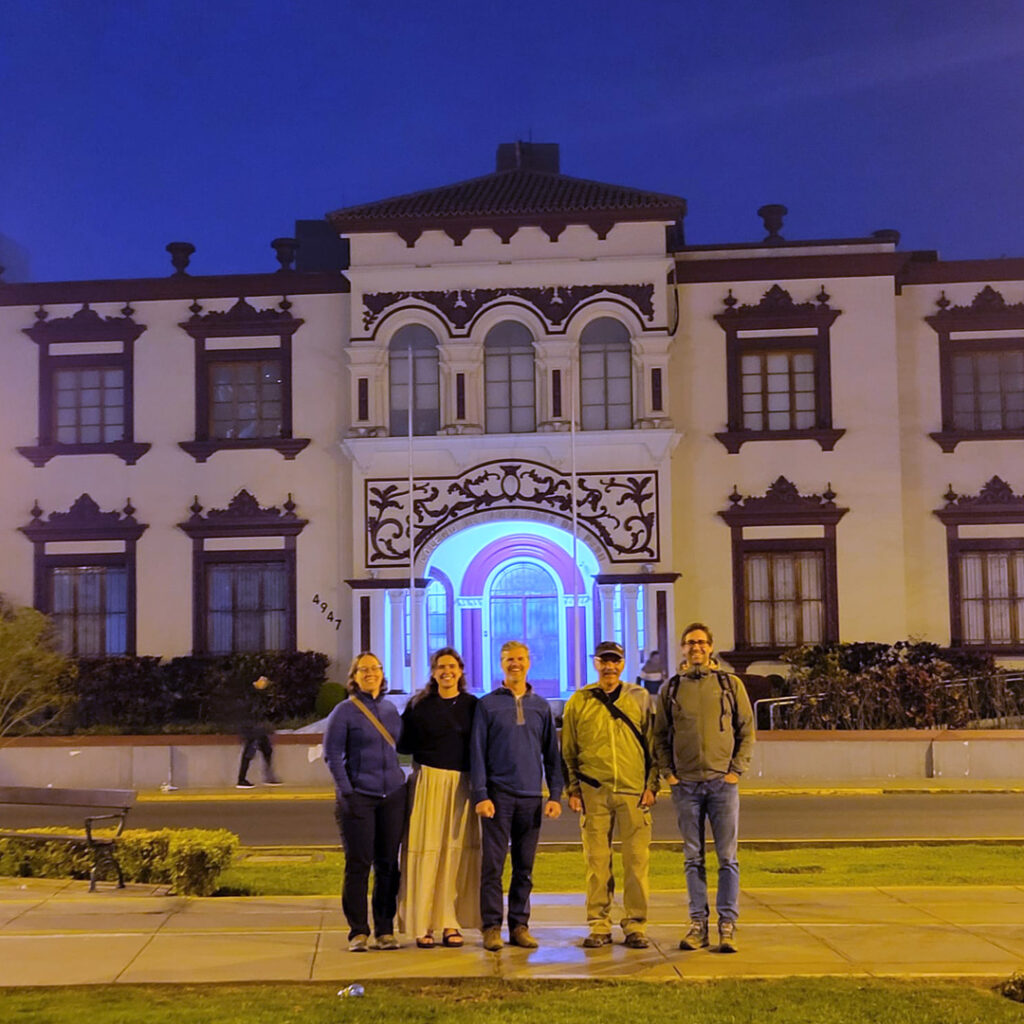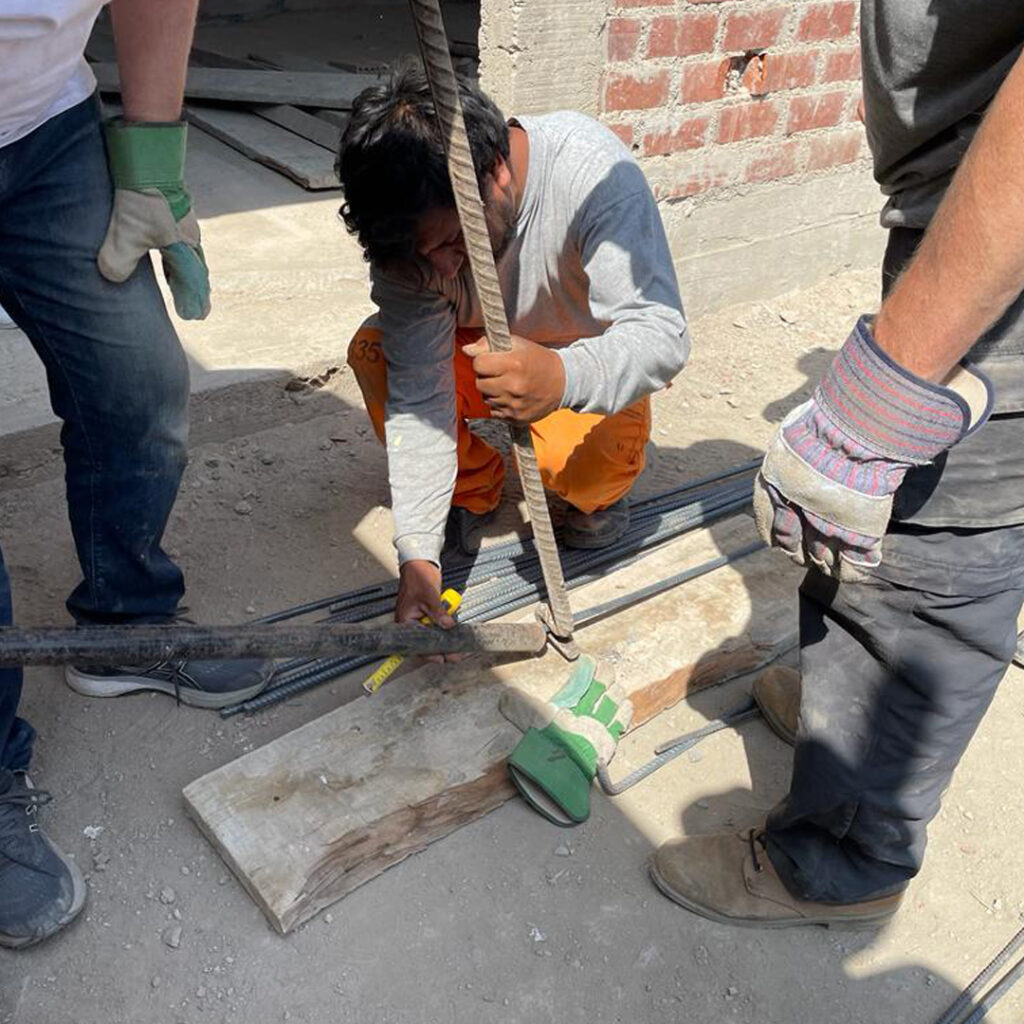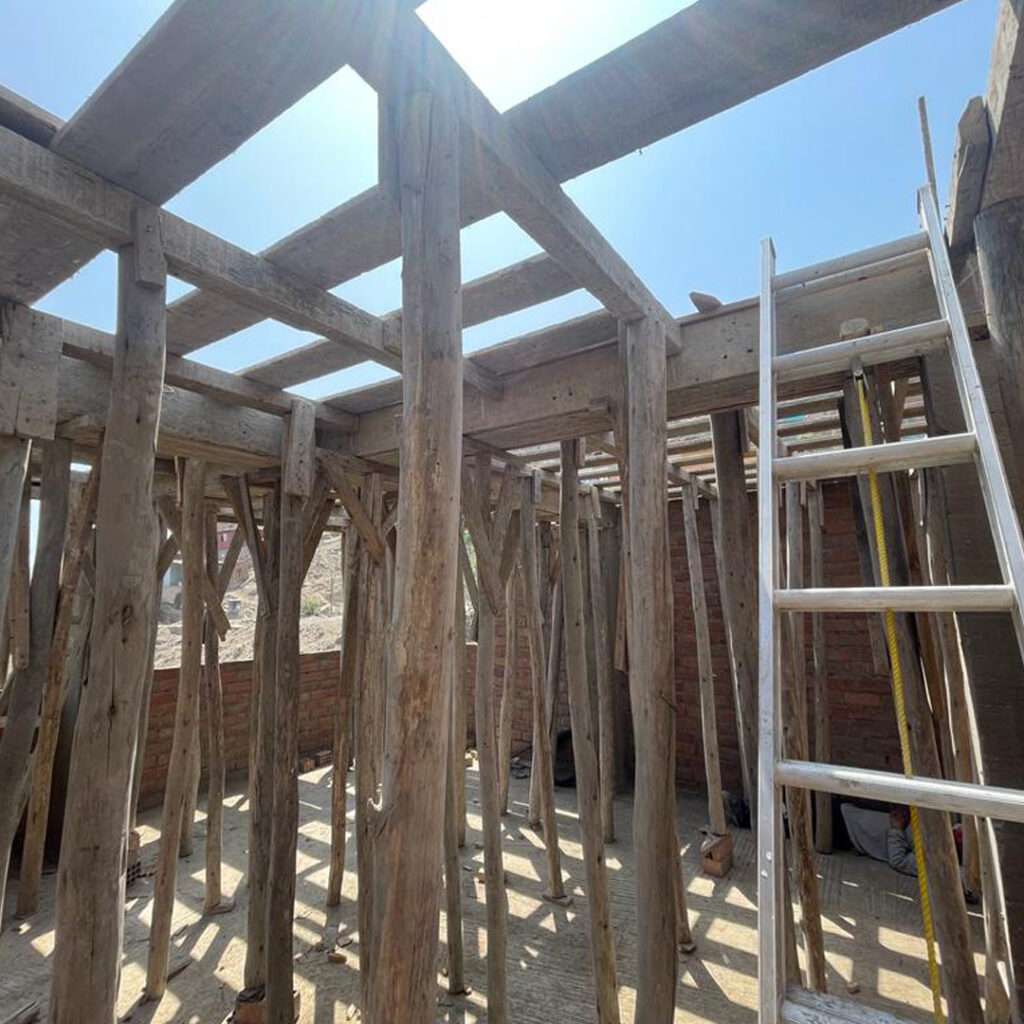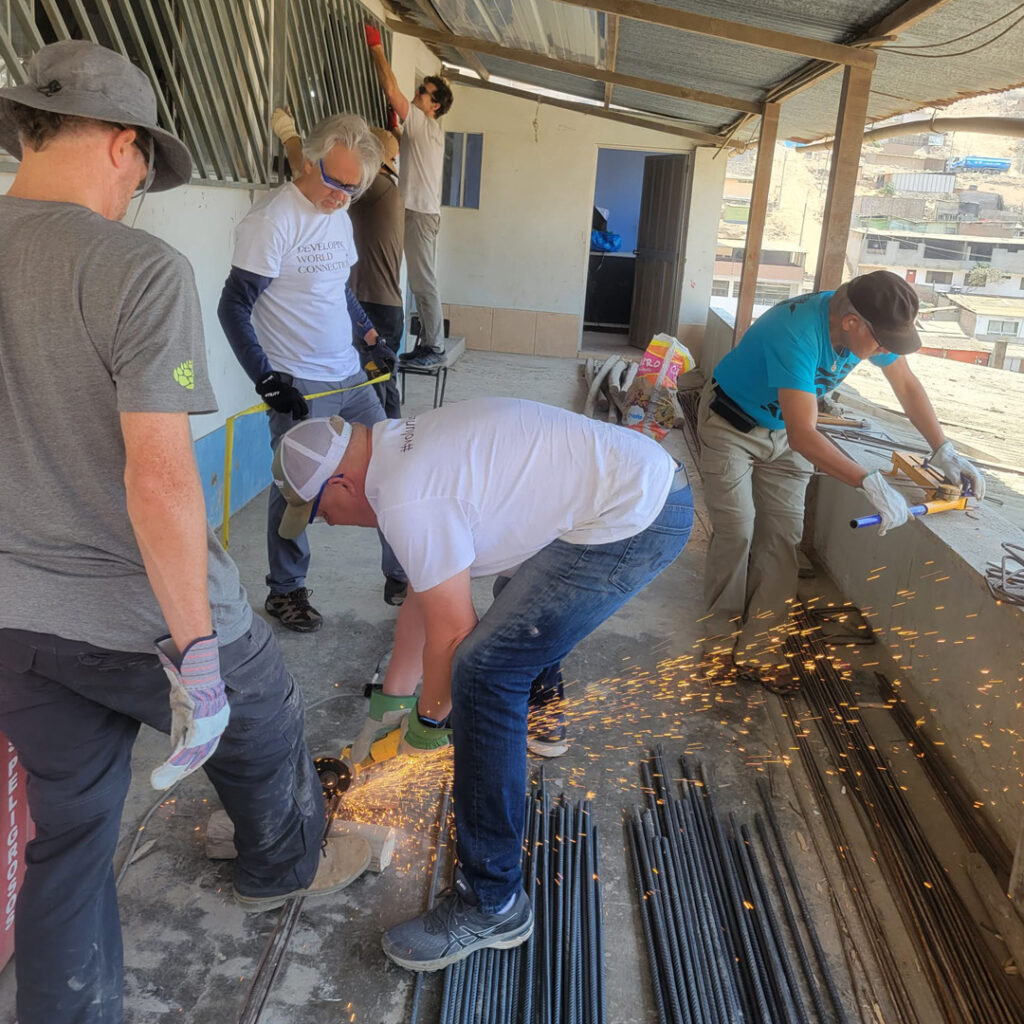Posted in Peru on November 9, 2022
Day 1 Peru 2022
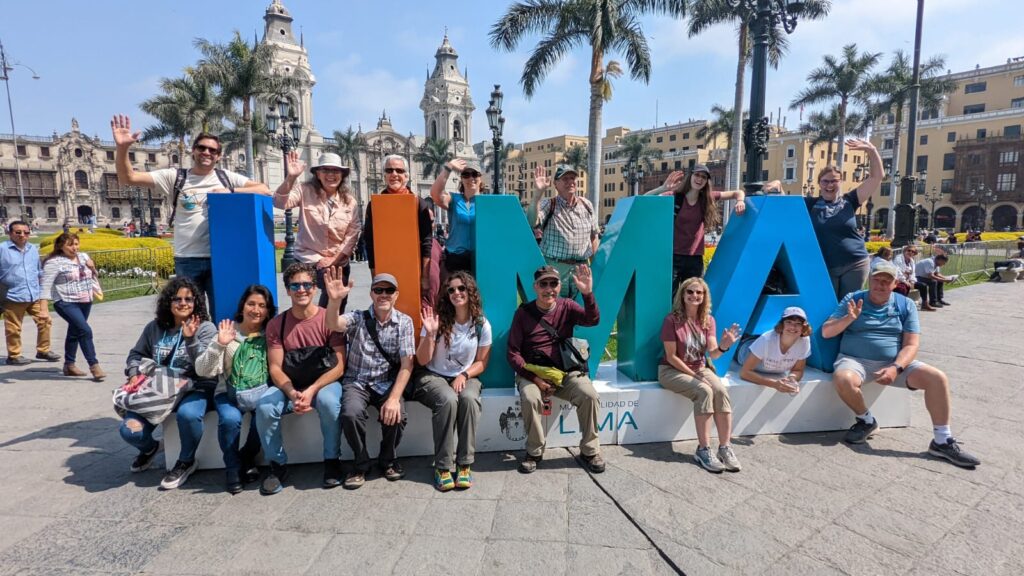
The day started with our team meeting together for the first time for an informative session by our fearless leader, Joshua. That in itself was a major feat as it meant that everyone’s travel plans resulted in safe arrival together, with only one checked bag being a flight behind.
We met our translator (Katryn), our local program coordinator (Elvira) and our wonderful local guide (Javier) and set off for a day of adventure.
The first step was a public bus that involved close quarters with the locals, seeing a road temporarily closed due to avid soccer fans and some great conversations. We then gathered in the historic center of the city to marvel at the architecture.
According to our travelling teenagers (Claire and Carolyn) the highlights of the rest of the day can be summed up as visiting the Chocolate Museum and visiting the catacombs. One or two adults may have leaned toward the Pisco Museum as a noteworthy addition. All the engineers were certain that coming across the water main replacement project was the most exciting part.
Excited to visit the school tomorrow!
Rick
Day 2 Peru 2022

7:45 AM – departed the hotel in a van with nine volunteers; our interpreter, Karin; and our driver, Urso. A second van was to arrive for the remaining group of four volunteers and one translator; it was 30 minutes delayed.
When driving in Lima, roadway line painting, if present, are guidelines at best. The flow of vehicles continually meanders and merges. Variable structure compared to North American transportation, but it works.
The passage between Lima districts is distinct; from irrigated yards with grass and flowers to dry, sandy, dusty streets with garbage occupying boulevards. Construction in both districts can be seen with new HDPE waterlines installed in both. Water is precious and limited in Lima; it rarely rains. Still, they persevere in trying to grow trees and plants protected by reused plastic containers or used tires.
8:50 AM – Arrived at a school. The Urban Systems team in Peru received an introduction from Katia with the local group Ifejant. Toured around the school site and met a few students.
10:20 AM – Called to principal’s office. This time we were not in trouble. Through an interpreter, we learned the greater context of the school.
11:15 AM – Work begins. Crews started with cutting and bending rebar, nailing wood bracing, and painting. A load of rebar arrived to quickly haul off the road from where it was dumped.
12:30 PM – Lunch. Started with corn and cheese (which I initially thought was the entire meal). Then we were served rice with beef, onions, peppers, and fried potato strips. Finally, we were served sliced pineapple. Was tough for most to eat it all. Back to work.
3:00 PM – End of day debrief and signing up for available time slots of school supporting activities throughout the week.
3:30 PM – Departure from school.
4:30 PM – Arrived at the Bayview Hotel. Quick shower and change, then walked to our dinner reservation. Some opted to rest a little longer and take a taxi to dinner. Shower.
6:30 PM – Dinner reservation at Huaca Pucllana, an excellent restaurant next to ancient ruins. Back to the hotel after dinner to rest before tomorrow.
Chad Carlstrom
Day 3 Peru 2022

Hi everyone! My name is Malaya Coppola and I will be your tour guide for the Urban Systems – DWC trip to San José Obrero School today! I have been working at Urban Systems for over two years as a civil engineer in training. I decided to come on this Peru trip on a bit of a whim, not entirely sure what to expect. I hope that these daily blog posts provide a window into our day-to-day activities, and inspire you all to join on future trips.
This morning started with eggs, toast, and coffee at 7am, followed by our 1-hour, 18 km trip out to the school site. The rush hour traffic in Lima is really quite something.
In partnership with Urban Systems and DWC, IFEJANT has put together an after-school program named ‘Prominants’ for students who are looking to take a leadership role in their school community. Some of the students from the program were seeking engineers who could help them flesh out ideas for their community improvement project. Brain, Chad, Rick, and I were eager to find out more.

We met with Michael and Samuel, two 16-year-olds in the program who explained the problem to us in detail: limited services provided to the community have resulted in a garbage problem on their streets. Because the road to the community is so steep and bumpy, garbage trucks are unable to access the houses higher up and can only make it to the school. In addition, during the winter months when the humidity is high, the road turns to mud and becomes even more treacherous. Residents end up throwing their garbage into informal piles, some near the school site. The kids understand that the contamination from the garbage makes people sick, and they do not want to live in a community where there is garbage on the streets.
Michael and Samuel have proposed a prototype garbage bin, to be located across the street from the school. Most parents already ask their children to take the garbage out, so they are hoping that the kids can bring the garbage to the community bin when they come to school in the morning. The garbage will be collected 3 times a week by municipal garbage men since this is the furthest into the community they will go. They have thought of many details, including the dimensions (since children will need to access them), safety features, and materials needed. They have even raised funds to get the project going. The leader of the community has also been supportive. He was in attendance for the meeting and is hopeful that these ideas can be shared throughout the community, and to communities beyond once the prototype is proven effective. The kids are bright, well spoken in Spanish (according to our translator Karen) and keen. They are confident and proud of their work.

Following this, it was time for lunch! We walked down to the school lunch room for cream of spinach soup, chicken, quinoa and vegetable stew, and rice – prepared by moms in the community. It was a delicious Peruvian meal.
Following lunch, the crew went back up to the new classroom, where walls were being painted, rebar ties being formed, and even a roof being built. The team worked away for a while until more students from the Prominants program came to share their ideas. Some of the team continued to work, but Chris, Carolyn, Sarah, Claire, Katrin, and I wanted to hear more about the Kiosk Program.
The Kiosk Program is a small canteen run by students who are 10-12 years old. They sell snacks and drinks during break times to other children. The kids that participate in the program split the earnings from the kiosk at the end of the year as payment for their joint efforts. They said that the kiosk has helped them with their confidence in speaking in public, and math skills, and has been great for making new friends. We asked some of the kids what they intend to do with the money once they received it and got a wide variety of responses. One girl wanted to purchase a cell phone, a few kids wanted to buy things for their pets, and some wanted to give the money to their mom. The kids have also agreed to donate a portion of the proceeds from the kiosk to contribute to the year-end party for the graduating class. It was quite touching to see the generosity the students share.
All in all, it was not a labor-intensive day for me. However, it was great to hear about the lasting community projects that Urban Systems and DWC are supporting together.
Posted in Peru on November 9, 2022
